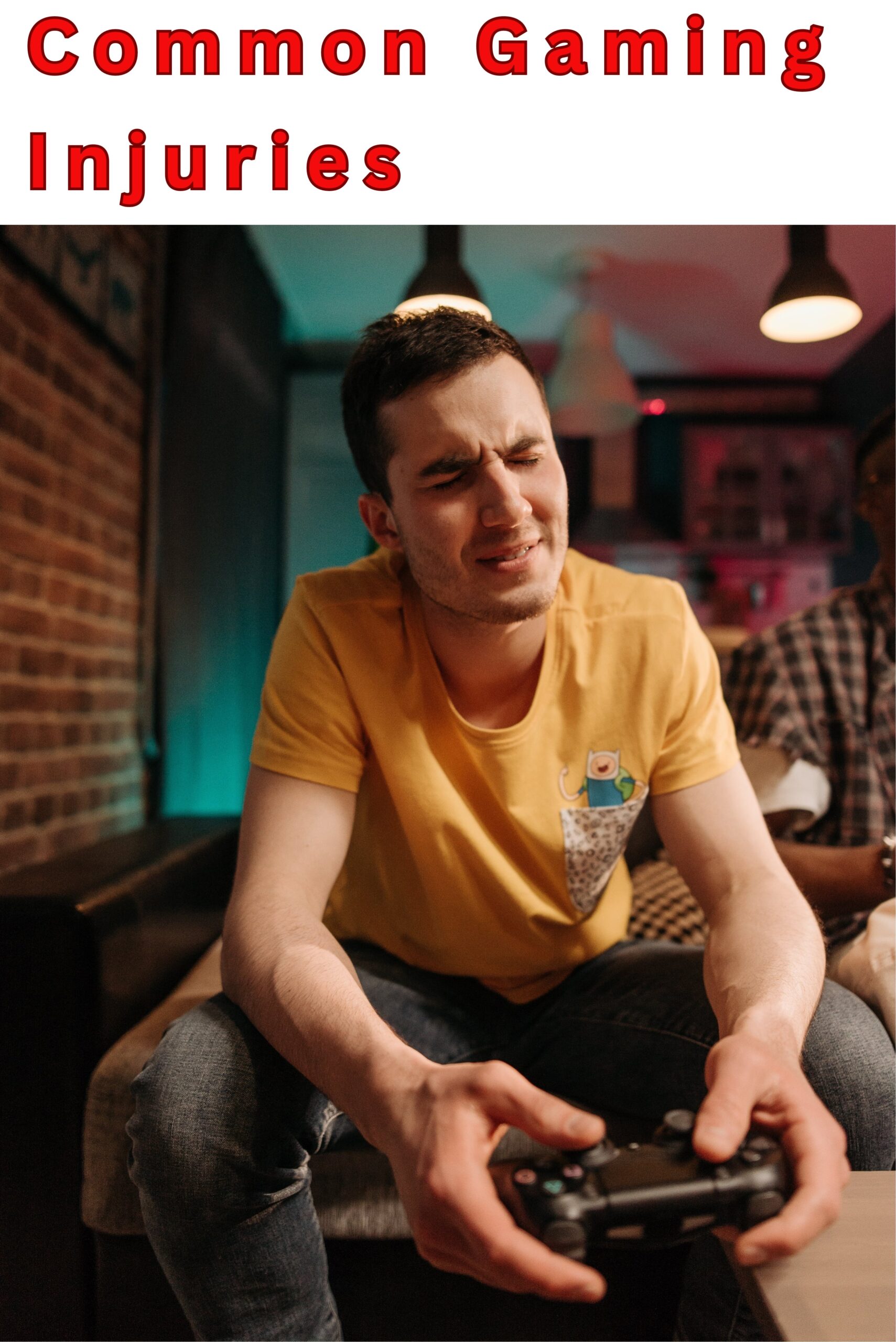In the competitive world of gaming, it’s important to address the potential risks associated with prolonged gameplay. We’ll explore common injuries, such as carpal tunnel syndrome and back pain, and how fitness products and ergonomic solutions can play a vital role in injury prevention and management. By understanding these strategies, gamers can prioritize their health and well-being while striving for peak performance.
Table of Contents
Common injuries found in gamers/esports professionals
As with any competitive activity, gaming and esports can lead to a variety of injuries. While gaming itself is not inherently physically demanding, prolonged and repetitive gameplay can result in certain issues. Here are some common injuries that gamers or esports professionals may experience:
1. Carpal Tunnel Syndrome (CTS)
Carpal Tunnel Syndrome or CTS is a condition that happens when the median nerve is compressed or squeezed at the wrist. It is often caused by repetitive hand and wrist movements involved in gaming, such as clicking buttons or using a keyboard and mouse for extended periods.
Over time, these repetitive motions can lead to inflammation and swelling of the tissues surrounding the carpal tunnel, resulting in symptoms such as pain, tingling, numbness, or weakness in the hand and fingers. If left untreated, CTS can significantly impact a gamer’s performance and overall quality of life. Treatment options include wrist splinting, physical therapy, ergonomic modifications, and in severe cases, surgery.
2. Repetitive Strain Injuries (RSI)
Repetitive Strain Injuries encompass a range of conditions caused by repetitive motions and overuse of certain muscles and tendons. In the context of gaming, common RSIs include tendonitis, bursitis, and tenosynovitis. The inflammation of tendons is referred to as tendinitis, tendons are the connective tissues that help attach your muscles to the bones. Bursitis occurs when the fluid-filled sacs (bursae) between tendons and bones become inflamed. Tenosynovitis results from the inflammation of the synovial sheath surrounding a tendon.
These conditions can cause pain, swelling, tenderness, and reduced range of motion in the affected areas. Treatment typically involves rest, ice, compression, elevation (RICE), physical therapy, anti-inflammatory medications, and modifying gaming techniques to reduce strain on the affected tendons and muscles.
3. Back and Neck Pain
Sitting for long periods in an improper posture can lead to back and neck pain among gamers. Maintaining a hunched posture while gaming, especially when using a keyboard and mouse, can strain the spine, muscles, and ligaments of the back and neck. Over time, this can result in muscle imbalances, spinal misalignment, and increased stress on the intervertebral discs. The symptoms may include dull or sharp pain, stiffness, muscle tightness, and reduced flexibility.
To prevent or alleviate these issues, gamers should ensure they have an ergonomic gaming setup with an adjustable chair, proper lumbar support, and a monitor at eye level. Regular breaks, stretching exercises, and maintaining good posture during gameplay are also crucial for reducing the risk of back and neck pain.
4. Eye Strain
Eye strain, also known as computer vision syndrome or digital eye strain, is a common issue faced by gamers who spend extended periods in front of screens. Staring at screens for long durations can lead to various symptoms such as dry eyes, blurred vision, eye fatigue, and headaches. The high-intensity light emitted by screens, improper viewing distance, and reduced blinking rate while gaming contribute to eye strain.
To alleviate eye strain, gamers are suggested to follow the “20-20-20” rule. The rule says to take a 20 seconds break after every 20 minutes and look at something placed 20 feet away from you. Adjusting screen brightness, using proper lighting in the room, maintaining a comfortable viewing distance, and using artificial tears or lubricating eye drops can also help reduce eye strain.
5. Headset-Related Injuries
Wearing headsets for extended periods can cause discomfort or pain around the ears, jaw, or head. The pressure exerted by headsets can lead to issues such as ear pain, soreness, or even skin irritation. Additionally, some individuals may experience temporomandibular joint (TMJ) disorders due to the prolonged clenching of the jaw while wearing headsets. TMJ disorders are conditions that affect the temporomandibular joint, which connects the jawbone to the skull.
The treatment of TMJ disorders may involve a combination of self-care measures, pain management techniques, physical therapy, dental interventions, and, in some cases, surgery.
The use of fitness products to manage injuries in gaming/esports
Fitness products can play a significant role in managing and reducing injuries in gamers and esports professionals. Here are some ways in which fitness products can be beneficial:
1. Exercise Equipment
Regular exercise is essential for strengthening muscles, improving flexibility, and maintaining overall fitness. Fitness products like resistance bands, weights, exercise balls, and balance boards can be used to perform specific exercises that target areas prone to injuries, such as the wrists, arms, shoulders, back, and neck. These exercises help build strength, increase endurance, and improve stability, reducing the risk of strains, sprains, and overuse injuries.
2. Ergonomic Accessories
Proper ergonomics are crucial for maintaining good posture and reducing the risk of musculoskeletal injuries. Fitness products like ergonomic gaming chairs, adjustable desks, and keyboard trays can help create a comfortable and supportive gaming setup. These accessories promote proper alignment of the spine, provide adequate lumbar support, and allow for adjustable height and angles, reducing strain on the back, neck, and wrists.
3. Stretching and Mobility Tools
Stretching and mobility exercises are essential for preventing muscle imbalances, maintaining flexibility, and reducing the risk of injuries. Fitness products such as foam rollers, massage balls, and stretching bands can aid in performing targeted stretches and self-myofascial release techniques. These tools help alleviate muscle tightness, improve range of motion, and promote muscle recovery after long gaming sessions.
4. Gaming-Specific Rehabilitation Tools
In case of injury, specialized fitness products designed for gaming-related rehabilitation can be beneficial. For example, hand and wrist exercisers, finger strengtheners, and grip trainers can help in the recovery and strengthening of the muscles and tendons affected by conditions like carpal tunnel syndrome or tendonitis. These tools provide targeted exercises to improve dexterity, grip strength, and finger mobility.
5. Wearable Technology
Wearable fitness devices such as fitness trackers or smartwatches can help monitor and track various health metrics like heart rate, activity levels, and sleep patterns. By providing insights into physical exertion and recovery, these devices can help gamers and esports professionals better understand their body’s needs and prevent overexertion or inadequate rest, thus reducing the risk of injuries.










